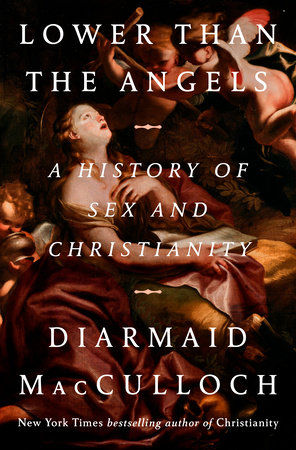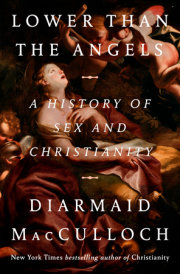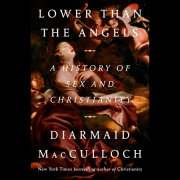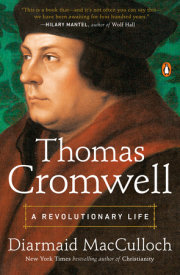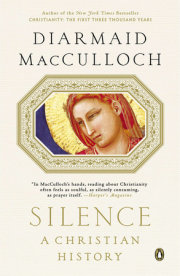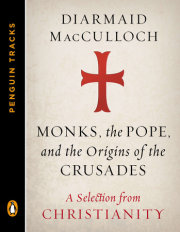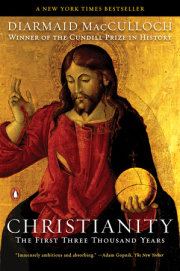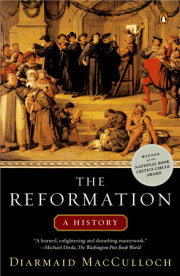1
Setting Out
'To other subjects it is expected that you sit down cool: but on this subject if you let it be seen that you have not sat down in a rage you have betrayed yourself at once.' A characteristically sharp observation of the Georgian philosopher Jeremy Bentham: the display-case in University College London sheltering his handsomely clothed sedentary skeleton is a secular shrine to the man who talked more common sense about sex than has been customary in the history of Western culture. Bentham was referring specifically only to what we now call homosexuality - although, when he wrote, that particular word did not yet exist. In our own time, his remark applies more broadly to almost any discussion of sex, marriage and gender, particularly when it touches on religious belief and practice.
Anyone sitting down to read a history of sex and Christianity in the twenty-first century is likely to have one reason or another for being in a rage. This book will serve as a receptacle for an impressively contradictory range of furies. It will displease those confident that they can find a consistent view on sex in a seamless and infallible text known as the Bible, or those who with equal confidence believe that a single true Church has preached a timeless message on the subject. Others will bring experiences leading them to hate Christianity as a vehicle of oppression and trauma in sexual matters, and they may be dissatisfied with a story that tries to avoid caricaturing the past.
We are all participant observers in matters of gender and sexuality, and few topics are more likely than sexual experiences or non-experiences to arouse intense personal memories, for good or ill. They shape our identities and self-esteem, so we are prone in moments of stress to dump this legacy beyond ourselves, often in curiously shaped guises. After a quarter-century and more of fielding the aggression of strangers, in media ranging from (literal) green ink to lengthy emails, I can ruefully second the comment from a fellow scholar analysing emotions in society, 'the historian's reminder of things forgotten is hardly ever welcome in the religious sphere.' Historians should accept this gladly as our fate and our calling. A delightful remark survives from an Indian historian in the days of the British Raj, Sir Jadunath Sarkar, who while chairing a meeting of the India Historical Records Commission in 1937 drily observed that civil servants in the Imperial Record Department were worried that free access to archives would 'unsettle many settled facts'. That is the inevitable, and welcome, consequence of examining the past properly.
Some may feel that the splendours and miseries of sex were ever thus; human nature has not changed in perhaps three hundred thousand years of recognizable Homo sapiens. Yet while I write on the assumption that this is likely to be true, in the last half-century sex and gender have rapidly become more instrumental in internal Church conflict than at virtually any time over the last two millennia of Christian life. Some institutional Churches have recently split apart as a result; everywhere there is hurt and contention. Once upon a time, ecclesiastical explosions were fuelled by such matters as the nature of the Trinity or the Eucharist, the means of salvation or patterns of Church authority; now human genitalia overshadow most other organs of ill-will.
That sudden convulsion in religious thought reflects the extraordinary speed of societal changes centring on sex and gender over a period of, so far, little more than half a century. This transformation has been experienced right across the world, not just in societies with a Christian complexion. More than half a century ago as a young graduate student, I was exhilarated at my radicalism in being open about homosexuality, and in subsequent years I felt rather pleased with myself in being at the forefront of sexual liberation. Then I found that my assumptions had been completely outflanked by proclamation of trans identities hardly ever discussed in my youth, and equally by vituperative criticism of trans identities on feminist grounds; those opposing but passionately held convictions both shared roots in the sexual revolution of the 1960s and 1970s.
These confusing experiences have taught me a lesson about being more observant or empathetic about the differences of others. In such circumstances, we should not be surprised that those slow-moving conglomerations of myriad opinions known as Churches have found it agonizingly hard to react coherently to questions they had not previously asked, let alone answered. Church leaders feel obliged to bring some clarity or comfort to those whom they seek to guide, and they are right to be wary of embracing the latest primrose path to novelty. The story of eugenics in the nineteenth and twentieth centuries, which we shall visit in this book, is a salutary warning about that (below, Chapter 17).
Yet everyone confronting the unfamiliar, inside or outside a religious system, has a duty of enquiry and exploration, as a means of combating fear. Fear is generally fear of the unknown. Knowledge is like a medicine to soothe a fever; in particular, proper knowledge of the past is a medicine for intellectual fevers contracted from prejudiced views of history. Prejudice, like fear, generally bases itself on ignorance, and such ignorance breeds distorted perspectives that poison present-day lives. My aim for this book is to deal with some of that fear by chronicling and even celebrating the sheer complexity and creativity of past generations grappling with their most profound emotions and consequent deeds. Looking at past attitudes to sexuality, we will find that over centuries they have been startlingly varied.
A theme of this study is that after weighing the witness of history and gathering historical evidence over three thousand years, there is no such thing as a single Christian theology of sex. There is a plethora of Christian theologies of sex. Christian societies and Church bodies have at different times believed totally contrary things about sexuality, depending on the structure of their society and the individuals doing the thinking. We may be surprised by some of the matters that seemed vital to past generations, and we ought to be surprised that some of the matters apparently vital to the Jesus depicted in the Gospels do not seem to have so worried his followers over the centuries. Jesus, for instance, bitterly condemned hypocrisy, unlike that topic now so agitating Christianity, homosexuality, which he never mentions. Yet Christian powers have never put hypocrites to death for their hypocrisy, in contrast to the fate of 'sodomites' in medieval Europe and its offshoots worldwide.
The same is true if one moves beyond pronouncements from Jesus himself to letters ('epistles') from later community leaders now incorporated in the Christian New Testament. 'In the very same list which has been claimed to exclude from the kingdom of heaven those guilty of homosexual practices, the greedy are also excluded. And yet no medieval states burned the greedy at the stake' - a wry comment from the twentieth-century Catholic historian John Boswell on 1 Corinthians 6.9-10. Accepting the glorious and inglorious difference of the past from the present may make it easier to see that our own beliefs about sexuality are our own creations, rather than something handed down on tablets of stone for all time. We may become less afraid of things that initially look strange and frightening.
Words and the Word of God
Christian readers may find it particularly unsettling to look afresh at the series of ancient religious texts on which Christian belief rests, collectively known as the Bible, but an essential part of our preparations in teasing out the history of sex must be to tackle the complex issues that the Bible raises. These writings are eternally inseparable from Christian practice and identity, as undeniable as the mothers and fathers who are bound into our lives by their presence or even their absence. This inescapable reality has encouraged some Christians to simplify the character of the Bible into the phrase 'the Word of God': an authority as unyielding on matters of sex as on any other concern of religion and, in that capacity, liable readily to be cited for simple solutions to complicated problems. Yet Christianity is one of three world religions, along with Judaism and Islam, that share a closer common relationship to each other than they do to any other faith system. All of them are more dependent than other religions on a sacred written text, leading their adherents often to be characterized collectively as 'People of the Book'. Another collective label that scholars in particular have found useful for the three faiths in recent decades is 'Abrahamic religions', since they all stress a common ancestor in their approach to God, Abraham, first encountered in Judaism's sacred writings - the oldest collection of the three.
Judaism's collection of sacred texts is now commonly known as the Hebrew Bible or Hebrew Scripture, though actually some small sections are written in another, related Semitic language, Aramaic. Since the medieval period, Jews have also often called it the 'Tanakh'. That immediately suggests its composite character, for the word is an acronym formed from the three initial Hebrew letters of three different category-names of books that Jews consider it to contain: Law, Prophets and Writings. Christians took this collective scripture to prophesy their proclaimed Messiah or 'Anointed One', Jesus, and in the course of time they created their own collection of texts about his life and significance: their 'New Testament'. This supplemented an 'Old Testament', which was the Hebrew Bible but with its constituent parts rearranged by Christians in a different order for their own purposes. So the Christian Bible is Old and New Testament: two collections of various texts, the second collection of which selectively affirms truths in the first. Despite the selectivity, Christians regard Old and New Testament as inseparable, after a painful row in the second century ce when a talented early theologian called Marcion asserted that the God of the Hebrew Bible was not the God who was the Father of Jesus. Marcion and his followers did not convince the mainstream body of the Mediterranean Church, and their movement has long since disappeared.
'Bible' is a word conjuring up an image of a single-volume book: in the last three centuries of Western Christianity, classically bound in bible-black. Historically that is not so; the word was first Greek, Biblia, which is in the plural, and had been used by Greek-speaking Jews to describe their sacred writings. It meant 'scrolls', because single 'books' or collections of shorter books from the Hebrew Bible occupied individual scrolls of papyrus or vellum (and in Jewish liturgy, they still do). Greek-speaking Christians borrowed the word Biblia from Jews, alongside so much else, and it passed into the Latin language unaltered, though Christians quickly replaced the scrolls with bundles of short strips of papyrus or vellum bound side by side like a modern book, the codex. When, in the seventh century ce, Anglo-Saxons, a newly converted and energetic set of Christians, crafted a new set of technical religious words in their own language (and did so with considerable sophistication and linguistic awareness), their Old English translation of Biblia remained in the plural as 'biblioðece'. That will easily be recognized as the word still surviving in other modern European languages, meaning 'library'. The Bible is a library, not a book, despite the degeneration of Biblia in post-Latin speech into a singular form.
In a library, as in musical polyphony, books contain many different voices, and we will unpick many melodies from the mixture on the subject of sex. That is hardly surprising in a set of texts in which some fragments may date from the second millennium bce, and which extend forward in date into the earlier part of the second century ce. Yet biblical complexity extends much further. An additional set of sacred writings loiters between the chronological boundaries of Old and New Testament - a gap of two or three centuries. Some of these books were actually added to the Hebrew Bible by Jews in Greek-speaking settings such as Alexandria, so early Christians who were also Greek-speaking regarded them as having the full status of God's Word. During the fourth century ce, some Christian commentators began to voice doubts and gave them the description apocrypha ('hidden things').
In the sixteenth-century Reformation of the Western Church, Protestants resolved to exclude the books defined as Apocrypha from what Christians term the 'canon' of recognized scripture. Roman Catholics did not, since they included some Catholic doctrines that were otherwise difficult to justify from scripture, such as the existence of Purgatory. Still further out than the Apocrypha in terms of biblical respectability are a great number of texts that mostly date between the second century bce and the first century ce - in other words, during the period that the 'Second Temple' rebuilt by the Jews in the sixth century bce still stood in Jerusalem as one of the Mediterranean's greater shrines. Often in the past Christian scholars gave these documents the loaded title of 'Inter-Testamental literature' - self-evidently not a term with any meaning within the Jewish tradition. A less value-laden though clumsy term would be 'non-canonical literature of the Second Temple'. Some of the texts have only been rediscovered in modern times, but all of them contributed to the thought-world of Judaism and the Christianity born out of it alongside the Hebrew Bible.
Laying aside the considerable impact of these extra scriptures, the Hebrew Scripture and the Christian Old/New Testament themselves are not the straightforward authority that they might seem. We must heed the blunt warning of the biblical scholar John Barton that '[a]lmost everyone who reads the Bible today reads it in translation.' In a translated text, there is a constant danger of original meaning and context falling through the cracks, and the gap then being stopped up with our own preoccupations and interpretations; yet the call to understanding is inescapable, an act of faith regardless of whether or not we might hold that the Bible is the Word of God. Barton reminds us of Rabbi Judah's realistic comment on the dilemmas of translation, recorded in the Babylonian Talmud: 'One who translates a text literally is a liar; one who adds anything to it is a blasphemer.'
This is not a new dilemma in sacred scripture, as is symbolized by the colloquial (koine) Greek in which the whole New Testament is written. That was not the native language of its chief subject, Jesus, though he would probably have had some working knowledge of it. Moreover, the everyday speech of Jesus would not have been the Hebrew of the Bible that he might read or hear read in the synagogue, but that different, though related, Semitic language, Aramaic. A few Aramaic words are embedded in phonetic Greek form in the text of the New Testament - sometimes an entire phrase, such as talitha cumi, which the author has to explain to his readers as 'little girl, get up'. That reminds us that we can only see the life and teaching of Jesus through the filter of a different language and culture.
Copyright © 2025 by Diarmaid MacCulloch. All rights reserved. No part of this excerpt may be reproduced or reprinted without permission in writing from the publisher.

